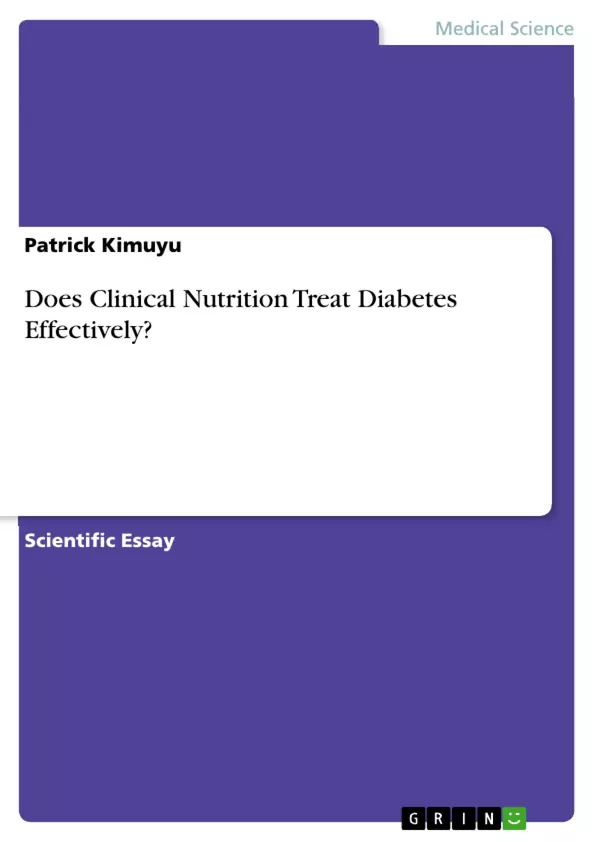Treatment of diabetes has become relatively efficient with the emergence of nutritional remedies. In the old days, people who suffered from diabetes died, owing to the adverse consequences of the disease conditions because there was no reliable treatment. Thereafter, insulin therapy was initiated and this seemed to alleviate diabetic conditions. Today, there are quite a number of approaches that help to treat diabetes, and one of the most principal approaches is clinical nutrition, in which, diabetic patients are put on a prescribed dietary regime and herbs to regulate blood sugar. Diabetes, which is characterized by polydipsia, polyuria and polyphagia conditions, is posing threat to mankind, although their severity depends on whether one is suffering from Type 1 or Type 2 diabetes. Currently, about 6.3% of the U.S population is suffering from diabetes. Globally, it is estimated that 171 million people suffer from the disease (CDC, 2003). As a result, the WHO has turned to nutritional remedies to increase treatment efficacy and reduce cost. To this effect, the question is ‘Does Clinical Nutrition Treat Diabetes Effectively?’ This essay gives an overview on diabetes then focus on alternative therapies, and the role of medicine to support this kind of treatment.
Inhaltsverzeichnis (Table of Contents)
- Does Clinical Nutrition Treat Diabetes Effectively?
- The Importance of Nutrition in Diabetes Management
- Alternative Therapies for Diabetes Treatment
- The Role of Medicine in Supporting Diabetes Treatment
- Conclusion
Zielsetzung und Themenschwerpunkte (Objectives and Key Themes)
This essay aims to explore the effectiveness of clinical nutrition in treating diabetes. It examines the history and prevalence of diabetes, explores alternative therapies, and discusses the role of conventional medicine in supporting these approaches.
- The impact of diabetes on health and healthcare systems
- The role of nutrition in managing diabetes
- The effectiveness of herbal remedies in treating diabetes
- The importance of lifestyle changes in diabetes prevention and management
- The integration of complementary and alternative medicine (CAM) in diabetes care
Zusammenfassung der Kapitel (Chapter Summaries)
- The essay begins by introducing diabetes and its prevalence, highlighting the growing burden of the disease on global healthcare systems. It discusses the history of diabetes treatment, from insulin therapy to the emergence of nutritional approaches.
- The essay explores the use of herbal remedies in diabetes management, focusing on the potential benefits of specific herbs like Salacia oblonga, cinnamon, and garlic. It examines the research supporting the effectiveness of these natural treatments.
- The essay delves into the importance of lifestyle modifications in diabetes management, emphasizing the role of diet and exercise in regulating blood sugar levels. It highlights the benefits of consuming a balanced diet rich in essential nutrients.
- The essay explores the potential integration of complementary and alternative medicine (CAM) into conventional diabetes care. It suggests the establishment of specialized CAM departments in hospitals to provide early intervention and support for individuals at risk of diabetes or experiencing early stages of the disease.
Schlüsselwörter (Keywords)
The essay focuses on the keywords diabetes, clinical nutrition, herbal remedies, complementary and alternative medicine (CAM), lifestyle modifications, and healthcare burden.
- Quote paper
- Patrick Kimuyu (Author), 2016, Does Clinical Nutrition Treat Diabetes Effectively?, Munich, GRIN Verlag, https://www.grin.com/document/381283



